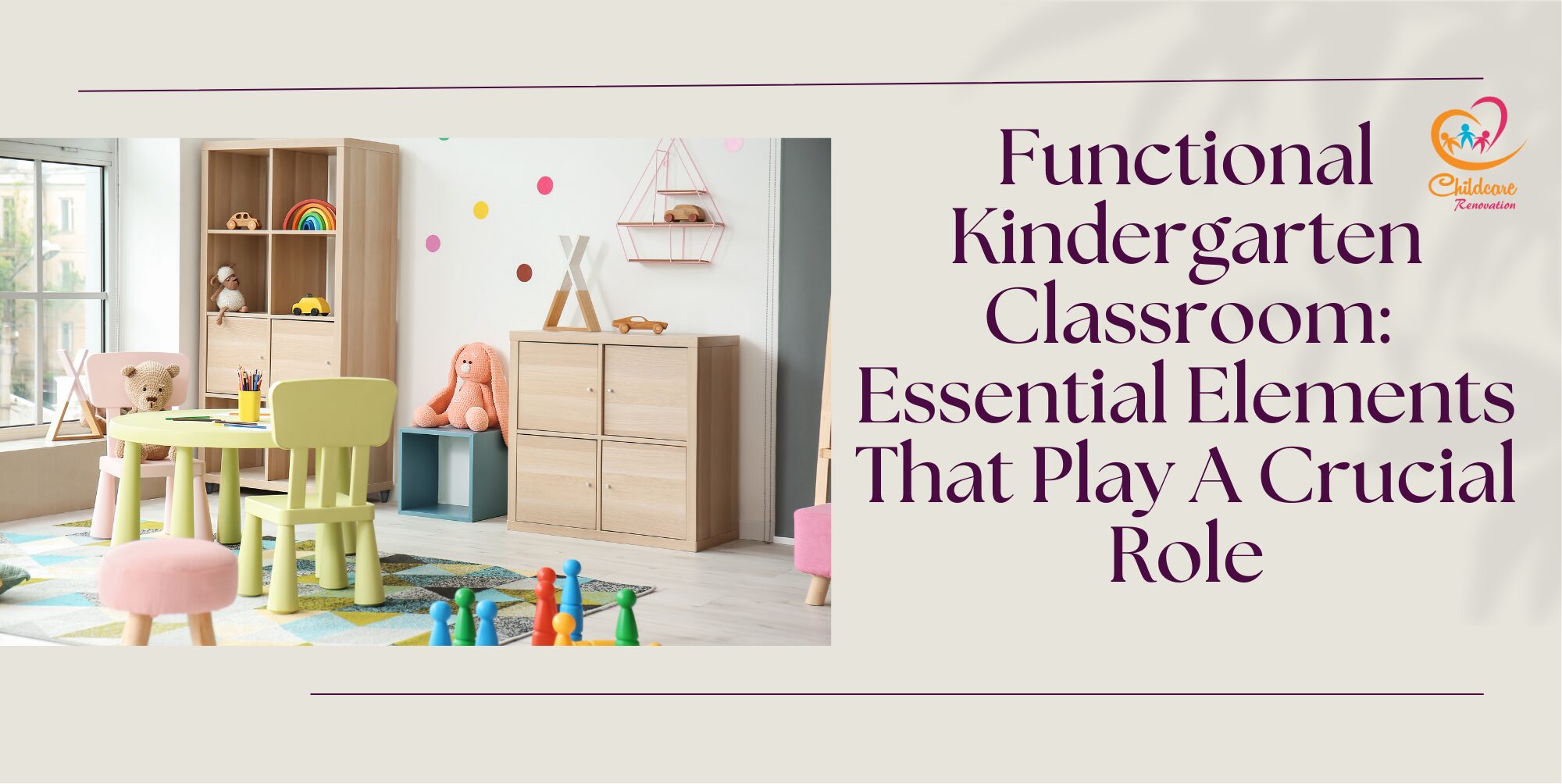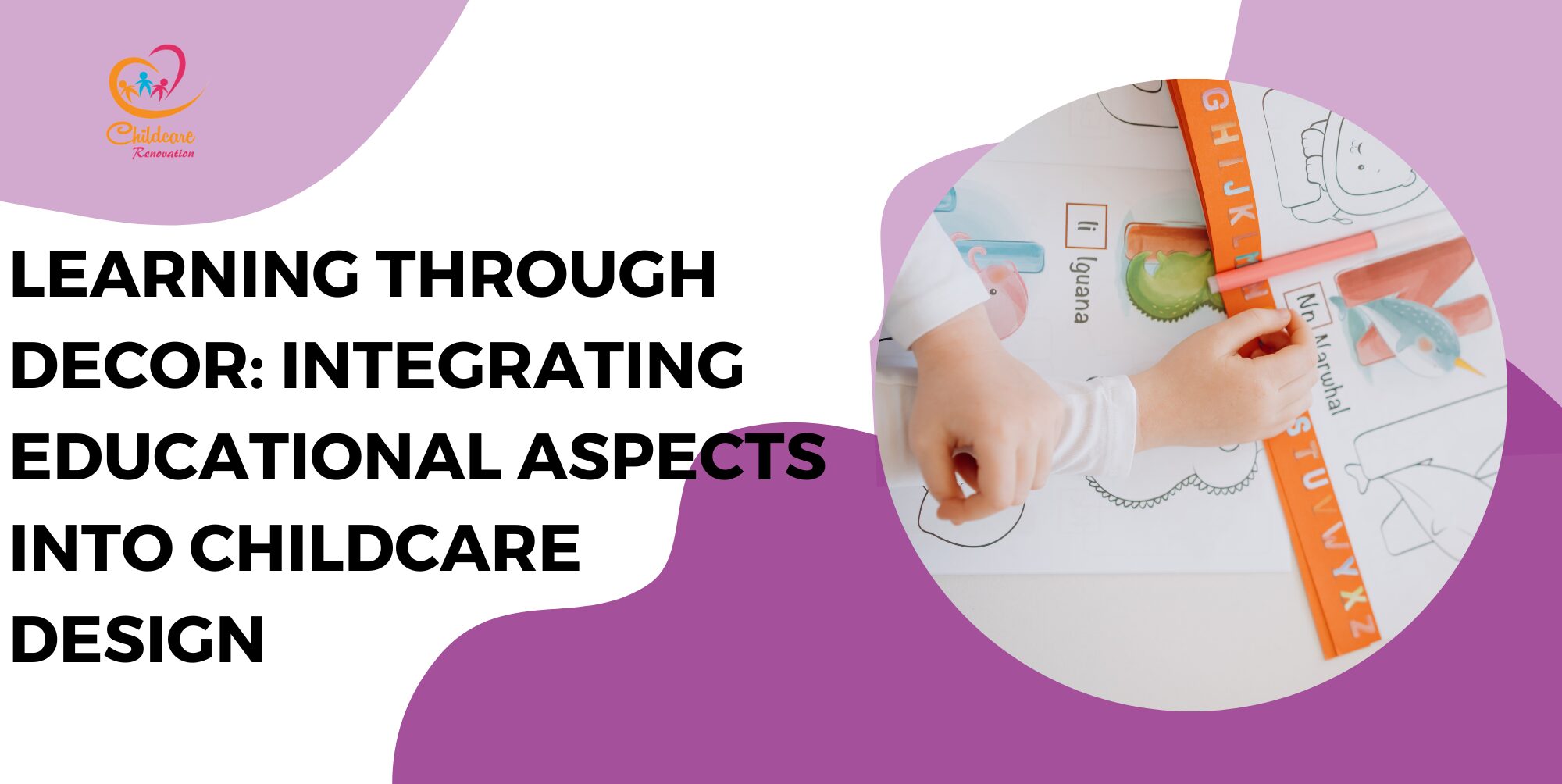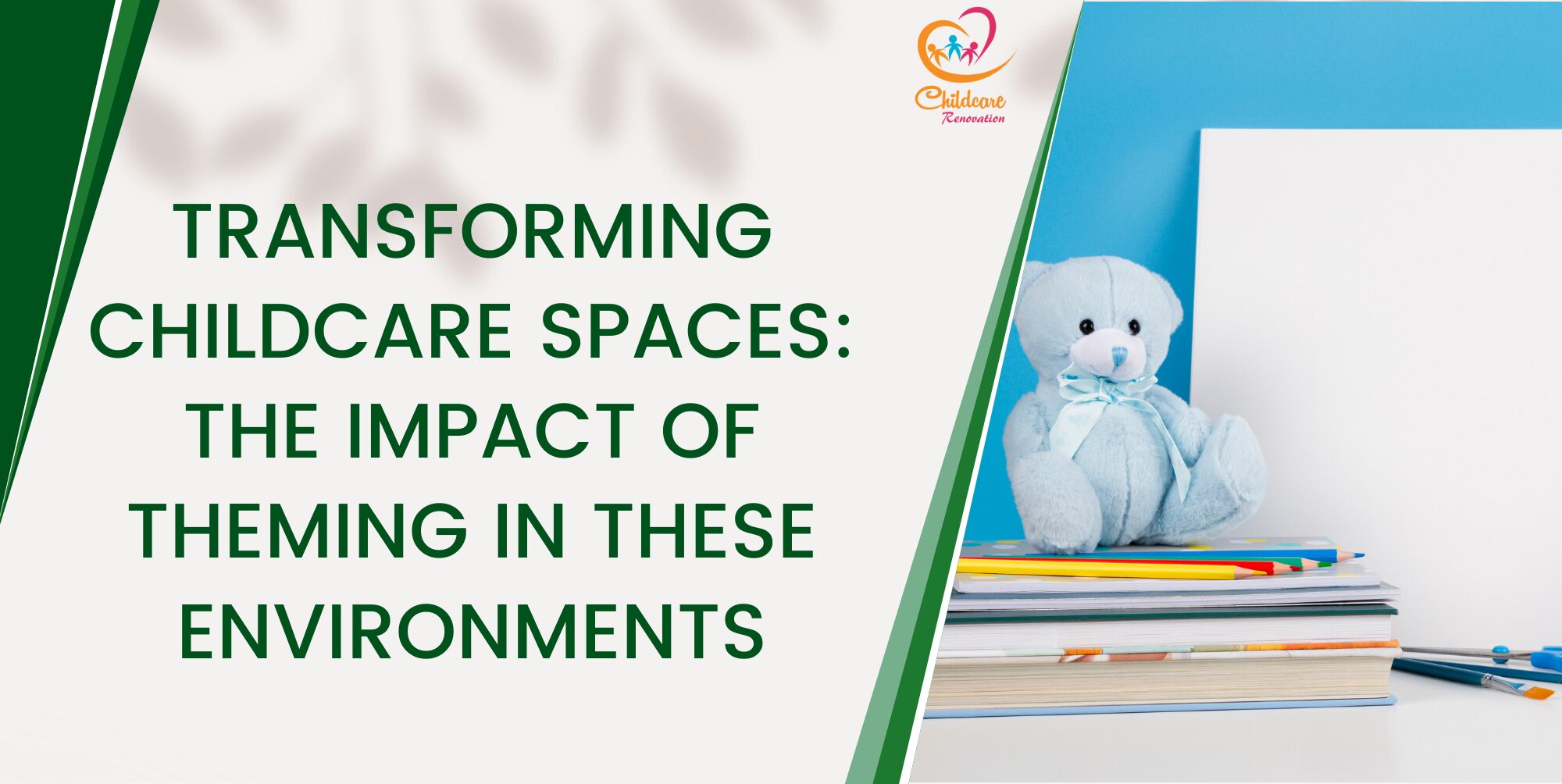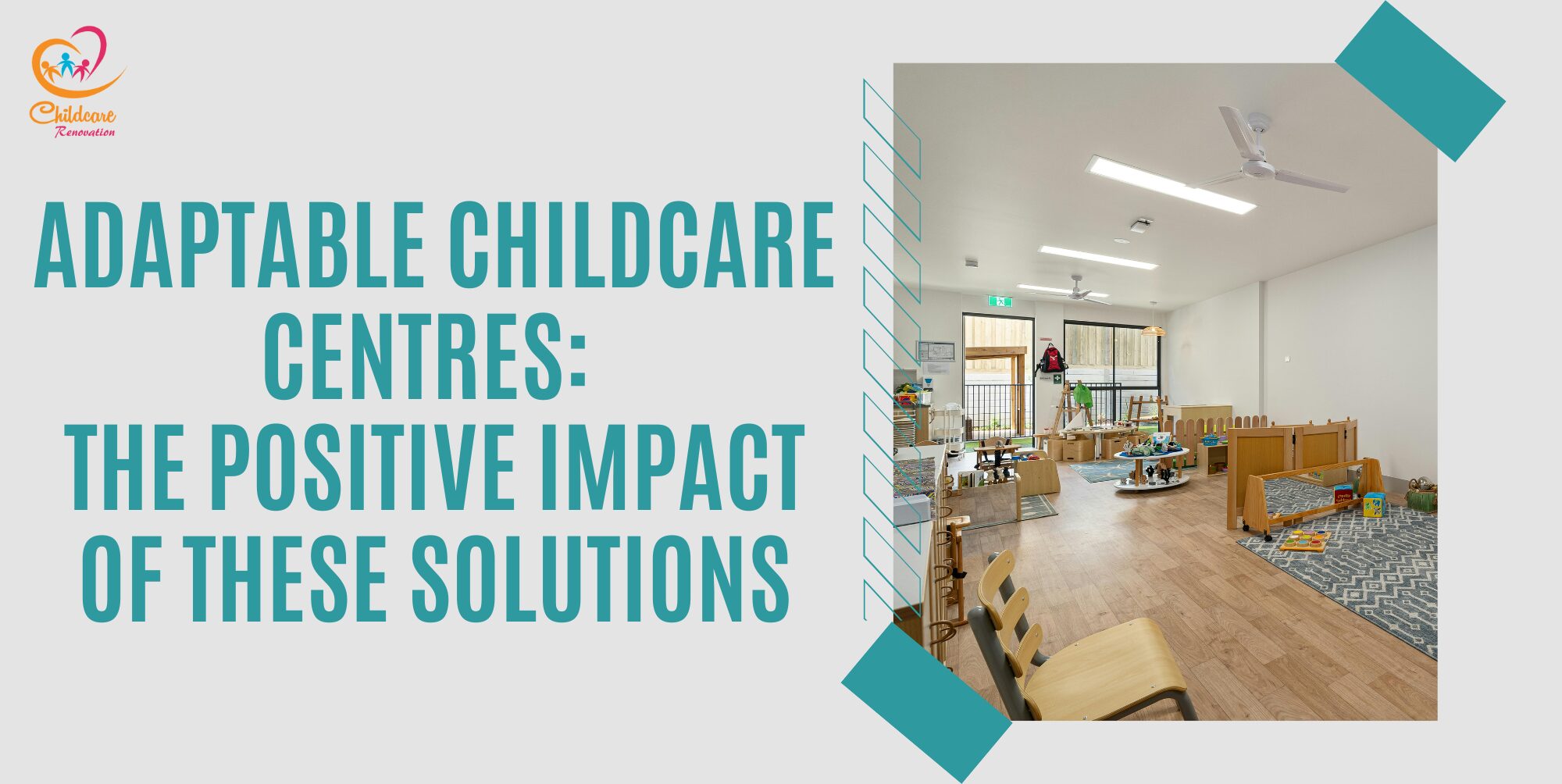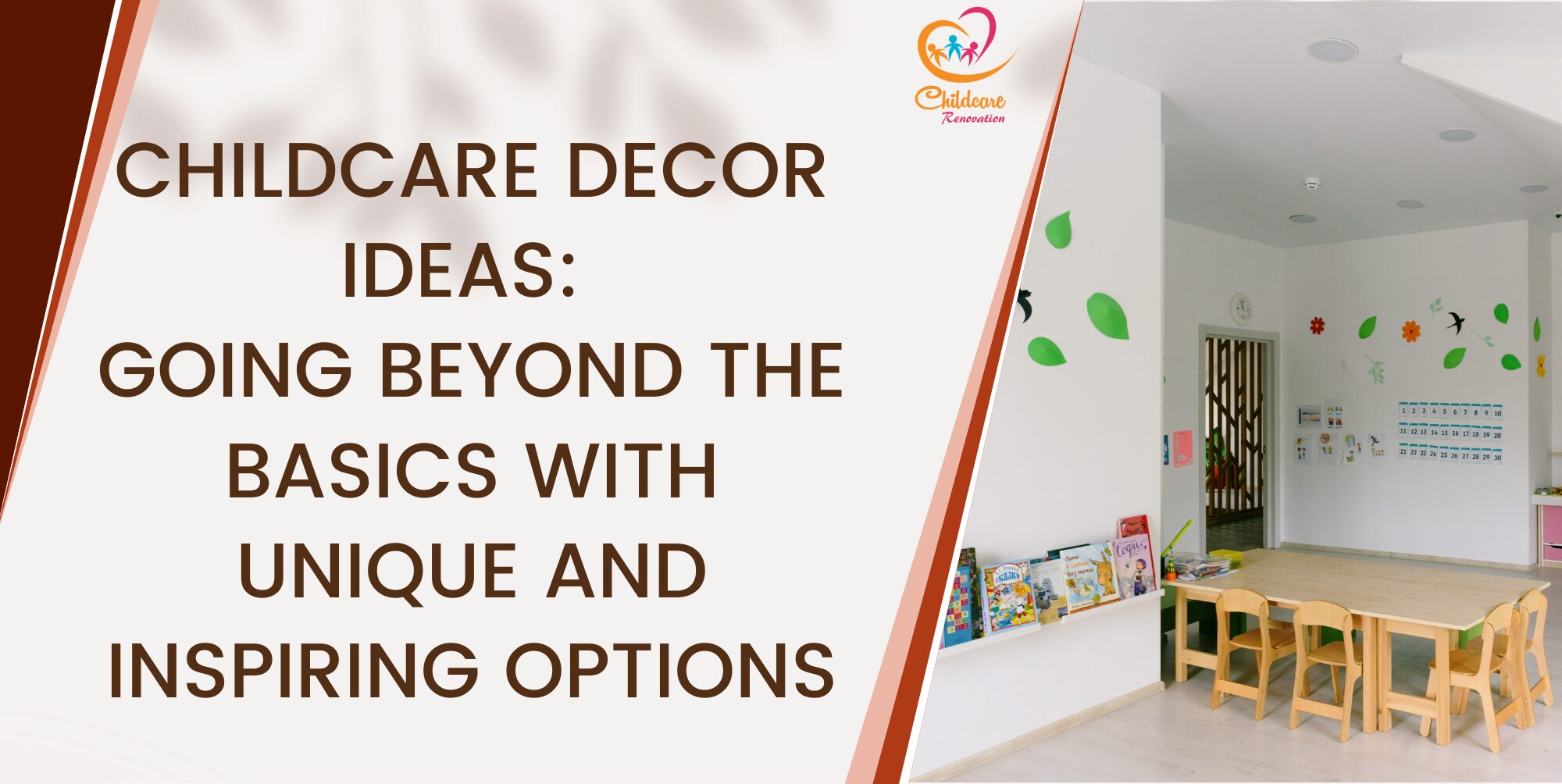Sustainable decor and eco-friendly concepts can be easily adopted into a childcare setting. There are many elements that can be incorporated which will further make the establishment more sustainable. Below are 4 interesting ways in which a daycare can create a more sustainable approach using various decor.
Sustainable Decor #1: Sustainable Materials

Image Credit: Canva
Sustainable materials are a key aspect in the mission to design and operate eco-friendly daycare establishment. This is a direct reflection of the commitment towards environmental responsibility and creating a healthier and more inspiring environment for children. The use of eco-friendly materials help in reducing the carbon footprint of the establishment while also providing educational opportunities about sustainability to children from a young age.
One example of primary sustainable materials is recycled or up-cycled furniture. Items such as tables, chairs and shelving units made from reclaimed wood or repurposed materials can significantly reduce waste. These pieces often have a unique character; thus, adding a distinctive look and aesthetic to the establishment while promoting resourcefulness.
Natural fibres are another key component when it comes to incorporating eco-friendly aspects in a daycare setting. Rugs, curtains and cushions made from organic cotton, wool or jute are not only sustainable but also free from harmful chemicals that may be commonly found in synthetic textiles. These natural materials are typically more durable and can be safely decomposed when reaching the end of their lifecycle. Lastly, eco-friendly toys made from sustainably sourced wood or organic textiles should be given more emphasis over plastic alternatives. These toys are typically more durable and safer for children alongside being free from toxic chemicals found in many plastics.
By integrating these sustainable materials, daycare establishments can create a nurturing and eco-conscious environment that benefits both children and the planet.
Sustainable Decor #2: Incorporating Greenery

Image Credit: Canva
Integrating greenery into eco-friendly childcare establishments can significantly enhance the environment, providing numerous benefits for children and the staff. Indoor plants are a vital component as they help improve air quality by absorbing toxins and releasing oxygen; therefore, creating a healthier space for everyone. Choosing non-toxic and child-safe plants such as Boston ferns and spider plants ensures safety while adding a natural touch to the decor.
A living wall, also commonly known as vertical garden can help serve as a vibrant and educational feature in the setting. This area of the daycare can be used for showcasing a variety of plants and illustrating concepts of growth and nature. This interactive element can also be used to teach children about botany and the importance of plants in our ecosystem. Additionally, outdoor spaces can be transformed into green havens with vegetable gardens and flower beds in which young children can engage with nature directly. These areas provide opportunities for hands-on learning while promoting curiosity and fostering a connection with the natural world.
The process of planting, nurturing and observing growth can further instil a sense of responsibility and appreciation for the environment in young minds. Furthermore, incorporating greenery in play areas such as creating natural play structures with logs and stones or using plant borders can stimulate imaginative play and physical activity. This not only enhances the aesthetic appeal but also encourages children to explore and interact with their surroundings.
Greenery can also be integrated into indoor spaces through design elements like green roofs and plant-covered walls which help regulate indoor temperature and reduce noise levels. This is key in creating a more comfortable and serene environment. Overall, the inclusion of greenery in childcare settings not only contributes to sustainability but also promotes the physical and mental well-being of children; hence, making it a vital aspect of eco-friendly childcare design.
Sustainable Decor #3: DIY Projects

Image Credit: Canva
DIY projects provide an excellent gateway for eco-friendly childcare establishments to engage young children while promoting sustainability. One example of a project of such nature is by creating wall art from recycled materials such as old magazines, newspapers or fabric scraps. Young children can cut out shapes, images or letters and arrange them into a collage on a large canvas or cardboard. This does not only act as a decorative piece to the space but also teaches children the value of repurposing and that it can be a fun and engaging activity.
Another fun activity is building bird feeders from used plastic bottles or milk cartons. By decorating and filling them with birdseeds, children have the opportunity to learn more about wildlife conservation and the importance of reusing items. Making planters from tin cans or glass jars is another great project whereby young kids can paint the containers and plant herbs or flowers. This can indirectly help in fostering a connection to nature and understanding of plant life cycles. Creating DIY toys such as fabric scrap dolls or wooden block sets from untreated and recycled wood does not only reduces plastic waste but also sparks creativity and fine motor skills.
Up-cycling furniture can be both functional and educational. For instance, transforming old pallets into bookshelves or reading nooks encourages a love for reading among young children while demonstrating how old items can be given new life. Creating storage solutions for the establishment that is made out of cardboard boxes or woven baskets can be a way to further organise the space in an eco-friendly manner. Involving children in these projects teaches them the principles of sustainability, resourcefulness and instil a sense of responsibility towards the environment. Moreover, it provides a more hands-on learning experience that enhance the child’s cognitive and motor skills.
By integrating DIY projects into the curriculum, daycare establishments not only enhance their decor in a more eco-friendly approach but also instil a lifelong respect towards the environment in the minds of young children. These activities portray that sustainability can be creative, fun and rewarding; thus, laying a foundation for environmentally conscious future generations.
Sustainable Decor #4: Energy Efficient Lighting

Image Credit: Canva
Energy-efficient lighting is a crucial component when it comes to creating an eco-friendly childcare establishment. Utilising energy-efficient lighting not only reduces the environmental footprint but also fosters a healthier and more sustainable learning environment for children. The first step in this direction is by replacing traditional bulbs with LED lighting which is known to consume significantly less power and has a longer lifespan. LED light fixtures convert more electricity into light rather than heat; hence, making them safer and more efficient.
Furthermore, incorporating natural light sources in the daycare establishment can dramatically reduce the need for artificial lighting during daylight hours. Strategically placing large windows will allow ample natural light to enter the space. This is particularly beneficial in creating a bright and inviting atmosphere throughout the setting. Light shelves and reflective surfaces can also be incorporated to maximise the distribution of natural light around the centre. To enhance energy savings, installing smart lighting systems is a highly effective option. These systems use sensors to automatically adjust lighting based on daylight availability, ensuring lights are only used if and when necessary.
Dimmable lighting options allow for the adjustment of light levels based on specific activities such as nap time or playtime, which can contribute to both energy efficiency and eco-friendly aspect of the centre alongside the comfort of the children. Additionally, selecting fixtures made from sustainable or recycled materials aligns with the eco-friendly approach; thus, becoming a step forward in conserving the environment. Using energy-efficient lighting in childcare settings has educational benefits as well. It provides an opportunity to teach children about the importance of energy conservation and sustainable practices.
By integrating energy-efficient lighting solutions, childcare establishments can significantly cut down on energy consumption, reduce utility costs, and create a more environmentally responsible and inspiring space for young learners. This approach not only supports environmental sustainability but also sets a positive example for future generations about the importance of caring for our planet.
Speak with The Experts
Planning to get started at your kindergarten but have no idea about it?
Childcare Center Renovation Singapore is a reliable company for renovation and interior design. They have about ten years of experience in this field and have a good reputation among customers.
Call us now to get your desired kindergarten design ideas now!




